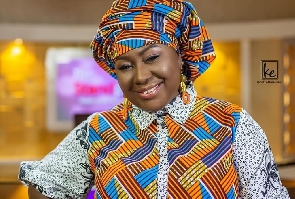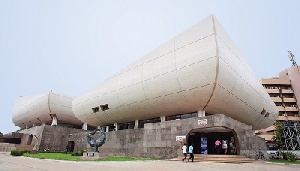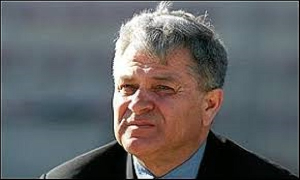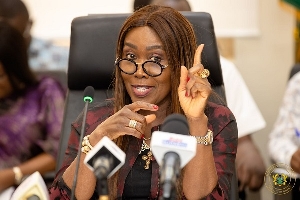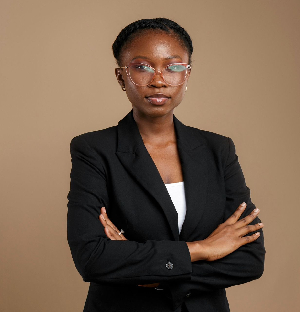Entertainment of Thursday, 14 July 2016
Source: nytimes.com
Africa’s capital of cool – A New York Times feature on Ghana
On a sultry night in Accra, the air smells of wood smoke, brine from the wet but welcome breezes off the Gulf of Guinea and the plumeria trees that line the streets. This, and the soundtrack of chirping insects, barking dogs and gunning motor scooters, feels quintessentially West African.
But drive into the Stanbic Heights district, home to many of this tropical metropolis’s newest boutiques, galleries and brasseries, and you’ll feel as if you’ve somehow detoured into South Beach — albeit a version with far less attitude and much more charm. “Something is happening here,” says the Lebanon-born Nada Moukarzel, who has lived in Ghana’s capital for 20 years. “A lot of Ghanaian professionals are coming home from places like New York and London, because they’re attracted by the city’s friendliness and relaxed way of life. There’s also the burgeoning of a really talented creative class in Accra.” As if echoing her sentiment, the most recent Armory Show in New York City just unveiled its first-ever exhibition devoted to the art of Africa, which included works by local artists El Anatsui and Nengi Omuku.
Moukarzel is at the heart of this transformative art-and-style scene, running not only the beautiful, mixed-discipline gallery La Maison — a version of 10 Corso Como in Milan — but Santoku, a stunning Japanese restaurant with a bamboo ceiling that was designed by the French interior decorator Hubert de Givenchy (a nephew of the couturier); Ghana Edition, an arts and lifestyle magazine; and the upcoming nightclub Carbon, which will open this year in partnership with Nick House, the London nightlife kingpin.
But although the art scene is what’s getting Accra most of its attention these days, this city of two million also has white-sand beaches, an electric dance-club culture and a collection of underappreciated midcentury architecture, like its Soviet-influenced Independence Square and Independence Arch. It’s an essential stop for anyone interested in the region’s history, and a lively symbol of Ghana’s future.
STAY
Kempinski Hotel Gold Coast City
This luxurious new hot spot — located in the middle of the city’s downtown ministries district — caters to Ghana’s growing tourist trade with an outdoor infinity pool and a Resense spa. The spacious rooms have teak parquet floors, beds with modern Kente cloth throws and wooden headboards lined with colorful Ghanaian fabrics.
La Villa Boutique Hotel
The building’s quirky charm comes from its history as a functionalist-style former Russian embassy; its 40 rooms are decorated with locally made furniture and fabrics, and the outdoor pool is surrounded by lush gardens.
EAT
The Chop Bar
You’ll find Ghanaian comfort food, including fufu (cassava flour dumplings), banku (balls of fermented corn) and jollof rice with a choice of chicken, beef or fish at this popular, friendly place in the downtown Achimota retail center. With its globe lamps, bare wood tables and molded red plastic chairs, it has sort of an L.A.-in-the-1960s vibe.
Coco Lounge
A favorite of the city’s art crowd, this airy restaurant has black-and-white tiled floors in crisp geometric patterns and ball-shaped, feather-covered lanterns hanging from its high ceilings. The food, while casual — burgers, fish and chips, huevos rancheros and pizzas made in a wood-fired oven built from an old Fiat truck — is reliably excellent.
Maquis Tante Marie
Located at Pram Pram beach, this easygoing open-air restaurant has bamboo furniture, bright yellow tablecloths and a big wooden bar where you can find popular dishes from across Ghana and the Ivory Coast, including nyama choma (grilled spiced mutton) and fish yassa (grilled in a sauce of preserved lemons and onions). The infectious party like atmosphere is due to the young, spirited crowd.233-240-145-211
SEE
Artists Alliance Gallery
Run by Ablade Glover, the 82-year-old painter who is recognized as the grandfather of Ghanaian art and best known for applying oil to canvas with a palette knife, this three-floor gallery is an essential stop for anyone interested in familiarizing themselves with the local art scene. Here, Glover displays a mix of works by established local artists, among them the painters Owusu-Ankomah and George Hughes, along with rising talents like fellow painter Ebenezer Borlabie.
Kane Kwei Carpentry Workshop
Accra has an unusual folk-art tradition: hand-carved wooden “fantasy” coffins that express something about the life, personality or aspirations of the deceased — a coffin in the shape of an airplane for someone who had always wanted to travel, for instance, or a cocoa-bean-pod-shaped one for a farmer. It’s worth stopping by this workshop in the suburb of Teshie if only to marvel at the craftsmanship and ingenuity of these creations.
Wild Gecko Handicrafts
This shop sells (and makes) ceramics, handmade textiles and jewelry hewn from silver and bullhorn. Owned and run by a Dutch-Ghanaian, it’s the best place in Accra to shop for local arts and crafts, including those ornamented with Adinkra: visual symbols, originally created by the Akans, that represent concepts or aphorisms. There’s Bese Saka, a sack of cola nuts that represents abundance and affluence, for example, or one called Odo Nnyew Fie Kwan, which means “Love never loses its way home.”
Woodin
As a producer of clothing for men (jackets, shirts, shorts and trousers) and women (blouses, skirts, dresses and trousers) made from colorful African-designed and printed fabrics, Woodin is a Ghanaian success story, with seven shops in Ghana and four in neighboring countries. The Greater Accra Mall location has the best selection, including clothes in bright floral and patchwork prints that will work equally well back home.
Entertainment
